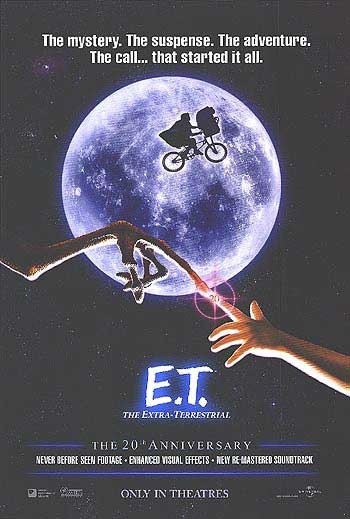 When The Hobbit started going into becoming a motion picture adaptation, only two films were planned: “The Hobbit: An Unexpected Journey” and “The Hobbit: There and Back Again.” Afterwards though, Peter Jackson expanded the series into a trilogy starting with “The Desolation of Smaug,” as well as changed the title to the final film to “The Hobbit: The Battle of the Five Armies,” released in 2014. There have been some complaints from fans about that decision, but regardless, you can say “The Hobbit: The Battle of the Five Armies” brings the Middle-Earth series to a favorable conclusion.
When The Hobbit started going into becoming a motion picture adaptation, only two films were planned: “The Hobbit: An Unexpected Journey” and “The Hobbit: There and Back Again.” Afterwards though, Peter Jackson expanded the series into a trilogy starting with “The Desolation of Smaug,” as well as changed the title to the final film to “The Hobbit: The Battle of the Five Armies,” released in 2014. There have been some complaints from fans about that decision, but regardless, you can say “The Hobbit: The Battle of the Five Armies” brings the Middle-Earth series to a favorable conclusion.
Picking up where “The Desolation of Smaug” ended, we actually see the desolation happen – but it quickly makes room for the final film’s main story power. With the kingdoms of Man and Elves trying to come to an agreement that Thorin Oakenshield, made in the previous installments, the newly crowned dwarf king chooses to let the kingdoms manage for themselves. He has his gold, and as soon as he finds the Arkenstone, he’ll be content to just rule over the mountain. Obviously, the Orc armies, lead by Azog the Defiler, played by Manu Bennett, have other plans for the newly cultivated land.
“The Hobbit: The Battle of the Five Armies” is, in Mike Reyes’ opinion, “undeniably the best of the trilogy, as it's not only a film in perpetual motion, but it's also a lean and quick experience that packs every moment with purpose.” If The Hobbit trilogy had stayed with the two movie plan, Peter Jackson could have kept his Middle-Earth winning streak, as “The Hobbit: An Unexpected Journey” had a great story set up that moved everything into motion. You can tell watching this film that The Hobbit series could have been an incline monster of action and purpose if it hand’s added a large amount of screen time, because if you break up elements of “The Hobbit: The Desolation of Smaug” between the opening and closing parts, you have had two really good movies that lasted over three hours.
A talk of “The Hobbit: The Battle of the Five Armies” has to include an evaluation of the 45 minute main final fight that goes into the films third act. Reyes mentions, “Suffice it to say, the Battle Of The Five Armies is reminiscent of the Battle of Minas Tirith that The Lord Of The Rings: Return Of The King sported.” This is where Peter Jackson and crew fly in this particular film, as the action has the right amount of set up and physical fight. Still it’s no surprise that Orlando Bloom’s Legolas in one of the warrior’s here. Richard Armitage’s Thorin gets in a fantastic climatic battle with Azog the Defiler here.
The only put-down to “The Hobbit: The Battle of the Five Armies” is that it seems to shove in too much of the already overcrowded cast into the film. For instance, Cate Blanchett, the late Christopher Lee and Hugo Weaving all have a small amount of screen time in a fight that, while impressive, really should only have been with the rest of the Gandalf/Necromancer material that “The Desolation of Smaug” had. Also, Billy Connolly is amazingly classified as Thorin’s cousin Dain Ironfoot, but again his stunt casting is only worth a miserable amount of screen time.
Small complaining aside, “The Hobbit: The Battle of the Five Armies” is a success that brings Tolkien book adaptation with Peter Jackson to a successful close. While The Lord of the Rings is more successful trilogy of the two, The Hobbit will still make for a perfect all-weekend spree with its storytelling successor.
In the end, it may not be as good as the previous two, but I still think it’s just as good. Actually, I don’t think either one of the films in this trilogy is worse or better than the other, much like with The Lord of the Rings trilogy. These two trilogies are very much identical to the Star Wars movies, when you look at it. Only difference is that there wasn’t a huge time gap between the two, like it was with Star Wars. Much like how everyone praises the Original Star Wars Trilogy but thrash the Prequel Trilogy (which I still defend to this day isn’t anywhere as bad as everyone says it is), these six movies have a parallel history as well. However, no one seems to critically thrash on The Hobbit trilogy since it’s still good and has all the elements we love. Sure it’s not as good as The Lord of the Rings trilogy, but there are still worth checking out, so definitely do so.
Well that ends my “Middle-Earth-a-thon” and thus we come to the conclusion of “Halloween Month.” I hope all of you have enjoyed my month reviews on all of the films I chose to review as much as I had making them. Happy Halloween everyone! Go out, dress up in your costumes, give out candy and/or get candy, but most importantly, watch as many Halloween related movies that you can.
In the meantime, I’m going into a week of hibernation and will not come out until next Friday when I start back up with my weekly Friday posts again. See you all next month for another exciting month of reviews.










